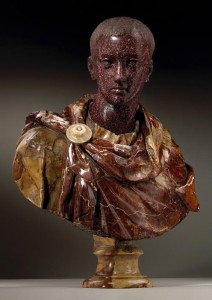
Cicero wrote that if you have a garden and a library you have everything you need. Many readers will find the words penned by the Roman statesman and philosopher as apposite today as when they were first written more than 2000 years ago. The concept of a sale devoted to furniture and collectibles associated with the libraries of grand houses in Ireland is seductive. Some pleasing and unique treasures that lie hidden within will emerge at the James Adam library sale next Wednesday April 26.
Even if in 2023 many of us choose to do so online we must recognise that in our contemporary world no substitute exists for the quiet, understated comfort and tranquil atmosphere of the library of old. Rooms like that cannot be realistically recreated in most modern homes but a quiet corner can be set up, a space for contemplation where ideas and actions can be formulated and advanced and the imagination can soar. There is quite literally no limit to the areas of interest that can be pursued in a library. A really good chair is essential. It is a mystery to me why anybody would manufacture, let alone buy, a chair that is uncomfortable to sit in or difficult to get out of. Adams has a fine example of a pair of Regency hide covered wingback armchairs. The estimate of €5,000-€7,000 is steep enough but they are pretty much guaranteed to be a comfortable and stylish investment. Other chairs like a Georgian style wingback armchair together with a Victorian lady’s armchair in olive green leather are, at €600-€800, more affordable. An oak library armchair attributed to Strahan in the 19th century Mannerist style has an estimate of €1,500-2,000 and there is plenty of other examples to choose from.

The auction is strong in fine antique furniture and there is no shortage of stimulating pieces from silverware, books, porcelain, maps, paintings, prints, and collectibles like a small brass signal cannon or a brass binnacle with compass. There are wine coolers and cellarettes, canterburys and music stands, benches and metamorphic library steps, a hide covered chesterfield sofa and an early 19th century folio or map stand.A chalk on grisaille portrait of leading Irish politician of his day Henry Boyle (1682-1764) by Robert West (1710-1770) is estimated at €6,000-€10,000. The Knight of Glin and Professor Anne Crookshank posited that this is the only known work by West whose Drawing Academy led to the creation of the Dublin School. Boyle, whose estates were centred at Castlemartyr, Co. Cork, was Earl of Shannon and Speaker of the Irish House of Commons. A portrait of an unknown young lady by Garret Morphy (1655-1715), one of Ireland’s finest Georgian portraitists, is estimated at €8,000-€10,000.

A collection of 16th and 17th century seal spoons, used to seal letters and important documents and a map of Ireland by Abraham Ortelius was published in 1579 will interest collectors. A c1780 Irish inlaid side table, attributed to William Moore, is estimated at €10,000-€15,000. Mirrors, desks, oil lamps, Oriental rugs, Donegal carpets and a collection of African, Australasian, Pacific Islands, Inuit and other ceremonial masks and figures put together by Paddy McEntee S.C. all figure. The most expensively estimated piece out of a total of 444 lots is a set of Great Irish deer antlers and skull (€25,000-€35,000). Lot 172 is a death mask of Patrick Kavanagh by Seamus Murphy, signed and dated 1967. The poet and sculptor were contemporaries and first met in Cork in 1943. It is one of only three casts known to exist, with one at the Kavanagh Centre in Co. Monaghan, the other in the Dublin Writen’s Museum. The estimate is €3,000-€5,000





